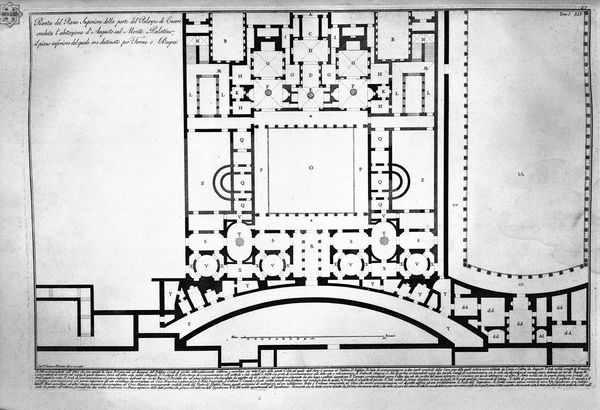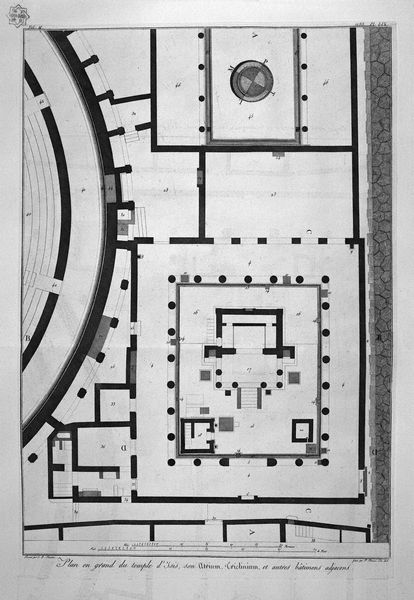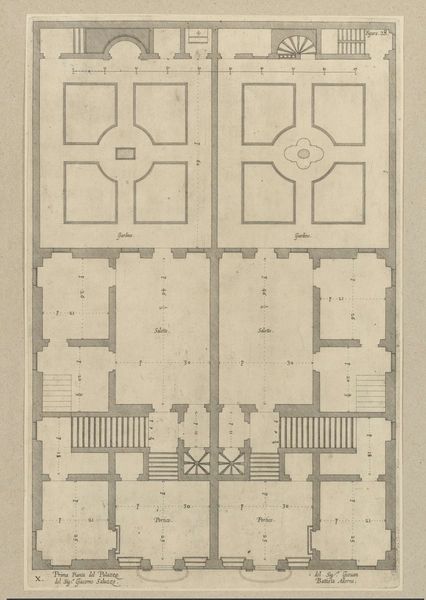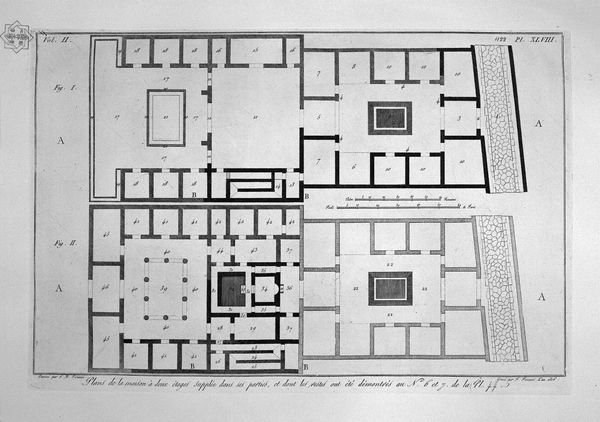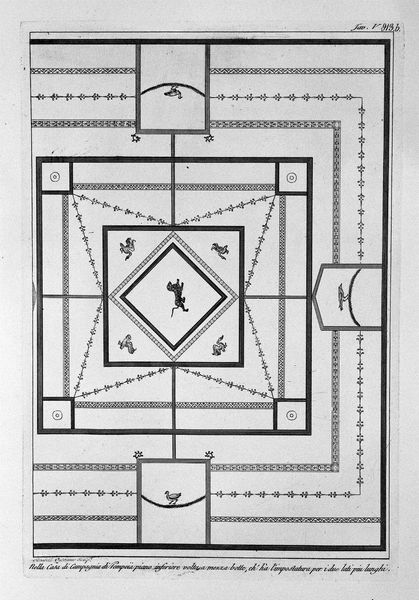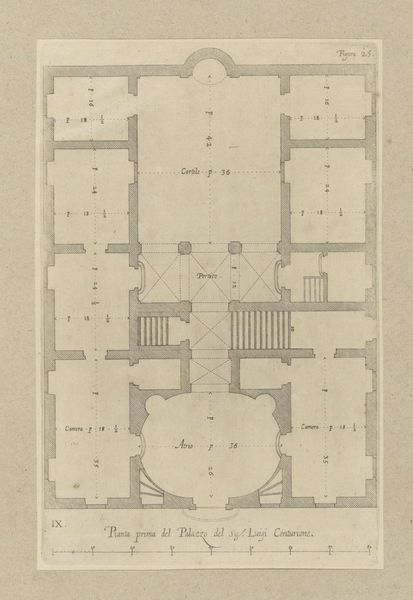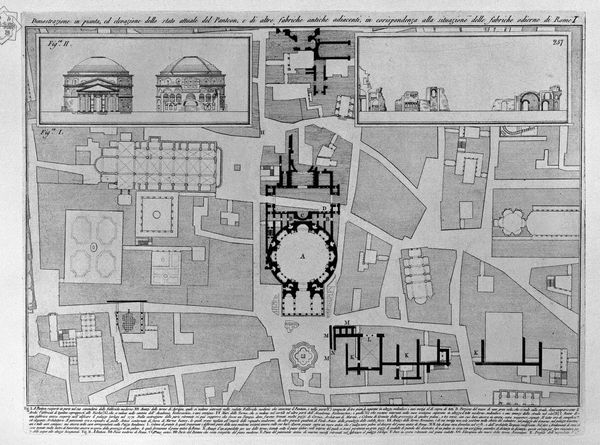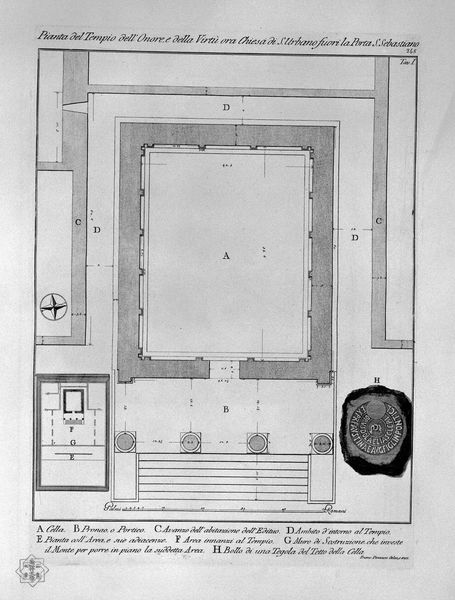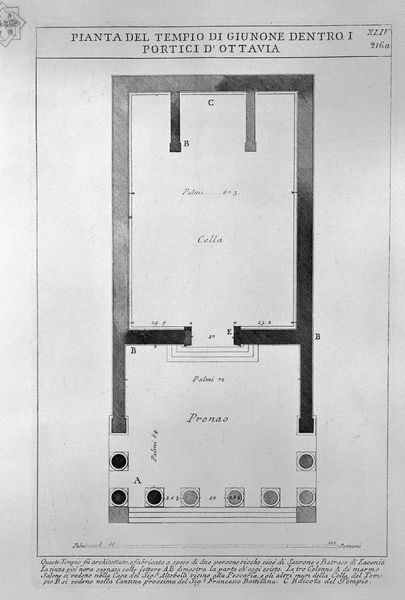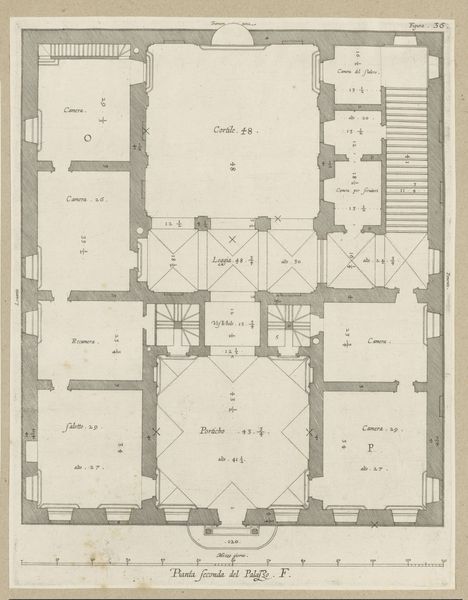
The Roman antiquities, t. 3, Plate XXXVIII. Plan of the rooms adjoining the burial chambers above.
0:00
0:00
drawing, print, etching, architecture
#
drawing
# print
#
etching
#
architectural plan
#
architectural design
#
geometric
#
architectural drawing
#
architecture
Copyright: Public domain
Curator: Looking at this etching by Giovanni Battista Piranesi, "The Roman Antiquities, Plate XXXVIII," it's really a deep dive into the layout of burial chambers, specifically, those connected to the Sepulchral Chamber of the freedmen and servants of the Arria family, meticulously mapped in 1737. What strikes you first about this birds-eye view? Editor: Immediately, it's this grid of Xs in the central space. It's almost unsettling. They evoke barred windows, some sort of strange cellular division, or even an odd maze leading to… well, to death, I suppose. There is also a somber stillness, like an ancient riddle laid bare. Curator: Interesting take. Given Piranesi's penchant for dramatic flair, those X-motifs could very well represent pathways, boundaries between spaces destined for eternal rest. The precision also lends a sense of the methodical. Do you see any significance in other parts of this plan? Editor: Well, the various chambers, marked with letters, certainly indicate designated areas for different roles within the Arria household. The mosaic floors, as indicated in the legend, also hint at a level of craftsmanship and social distinction even in death. Are the circles representing the ‘sarcophagi of baked earth’? If so, they really add another layer. Curator: Exactly, clay sarcophagi and small decorative elements placed throughout definitely punctuate these formal boundaries with humanity. Consider also that Piranesi wasn’t just documenting—he was interpreting, maybe embellishing too! Editor: The etching’s graphic clarity reminds us of how deeply Romans believed in proper commemoration and the architectural encoding of status even after death. Those repetitive patterns could mirror cycles, an architectural metaphor of continual renewal! And aren't burial places across many cultures regarded as some sort of cosmic mirror? Curator: Nicely put, highlighting continuity as well as loss! Looking closely helps to bridge across millennia to the human element that binds our narratives! What resonates with me personally is the echo, really. What about you? Editor: What sticks with me, beyond its historical specificity, is how Piranesi uses these geometric, rather clinical architectural lines to evoke something fundamentally unsettling. We often hide death. This boldly lays out a final geography.
Comments
No comments
Be the first to comment and join the conversation on the ultimate creative platform.
